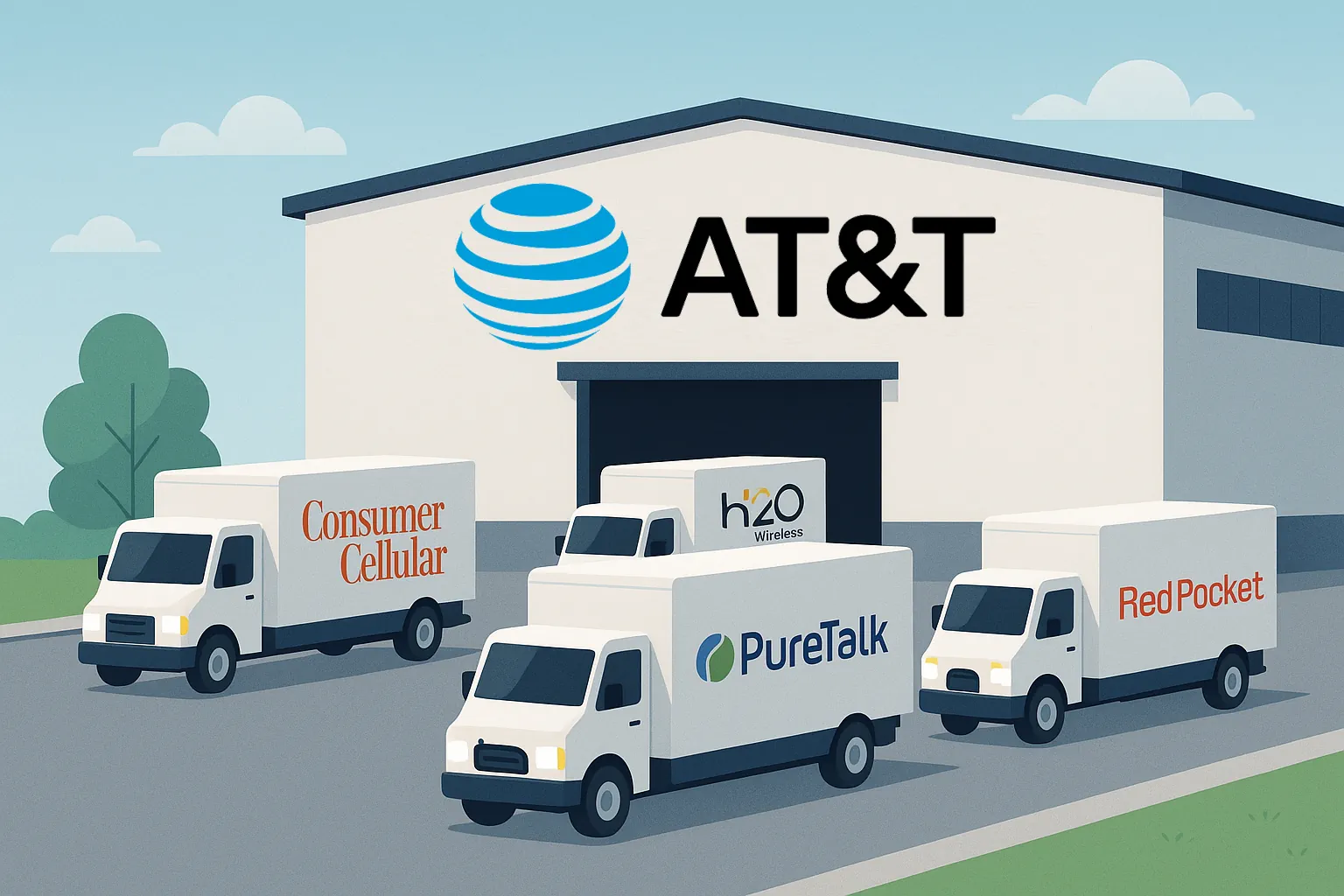Major wireless carriers like AT&T, T-Mobile, and Verizon don’t just serve customers directly, they also lease access to their networks to MVNOs (Mobile Virtual Network Operators).
While MVNOs can sometimes compete directly with a carrier’s own prepaid or postpaid offerings, they also serve as a strategic channel to expand market reach. By allowing independent or specialized brands to operate on their networks, carriers can tap into new customer segments and revenue streams that might otherwise go to competitors or be left untouched entirely. The relationship is complex but intentional: MVNOs can be rivals on paper, but they are also valuable partners that help carriers monetize unused capacity, extend into niche markets, and maintain industry dominance.
Here are the key reasons carriers actively partner with MVNOs:
1. MVNOs Reach Niche Markets and Fill Gaps Left by Carriers
Major carriers tend to focus on mass-market, high-margin segments leaving room for MVNOs to serve smaller, underserved, or overlooked audiences. MVNOs have gone after:
- Seniors (e.g., Consumer Cellular)
- Multilingual and immigrant communities with international calling needs (e.g., (e.g., Red Pocket Mobile, Lycamobile)
- Digital-native, price-sensitive customers who prefer to buy online (e.g., US Mobile)
- Tech-savvy customers wanting granular plan customization (e.g., MobileX)
Sometimes these markets can be too small, too price-sensitive, or too brand-differentiated for a major carrier to pursue directly, especially if doing so would dilute its premium brand image.
MVNOs are more nimble, experimental, and cost-efficient. They can fill gaps in service features, offer creative plan structures (like build-your-own or pay-as-you-go), and establish loyalty within communities that traditional carriers may not effectively reach.
By enabling MVNOs to operate on their networks, carriers can indirectly participate in this market expansion and experimentation turning otherwise low-priority customers into profitable wholesale relationships.
2. Low-Cost Subscriber Acquisition
Building brand awareness and acquiring new subscribers is expensive. Carriers often spend hundreds of dollars per new customer on advertising, promotions, and device subsidies.
With MVNOs:
- The marketing burden shifts to the MVNO
- Carriers still get paid for the network usage via wholesale fees
- MVNOs absorb the customer acquisition and retention costs
In short: carriers grow revenue without growing their marketing budgets.
3. Reduced Customer Support Overhead
Customer support is a major ongoing expense for carriers. MVNOs handle all front-line customer service, including billing inquiries, device issues, and account setup. The carrier’s only real “customer” is the MVNO itself.
This results in:
- Fewer support tickets for the carrier
- Streamlined operations
- Savings on call center staffing, CRM tools, and training
It’s a scalable model for carriers: one account (the MVNO) potentially represents a few million end users.
4. MVNOs Provide a Buffer Against Market Saturation
The U.S. wireless market is highly saturated, with most adults already subscribed to one of the major networks. This makes organic growth difficult for carriers.
MVNOs allow carriers to:
- Reach different customer segments under different brands
- Fight churn more effectively by capturing switching customers before they leave the network entirely
In essence, if a customer downgrades from a $100 T-Mobile postpaid plan to a $25 MVNO using the T-Mobile network, T-Mobile still wins.
5. Wholesale Agreements Provide Predictable Revenue
Unlike postpaid subscribers who may churn at any time, MVNOs sign wholesale agreements that offer more stable and predictable income streams for carriers.
- MVNOs pay for access whether their users fully consume the data or not
- These deals can include minimum commitments or volume-based pricing tiers
- They provide long-term revenue with minimal operational burden
6. MVNOs Enable Risk-Free Innovation
MVNOs can experiment with:
- Unusual plan formats (like MobileX using A.I. to customize user plans)
- App-based experiences
- Niche marketing tactics
- Unique bundles (e.g., combining wireless service with crypto rewards or content)
Carriers get to observe what works, and sometimes even acquire MVNOs whose models prove successful (e.g., T-Mobile acquiring Mint Mobile).
MVNOs Are A Low-Risk High-Leverage Tool
In many ways, MVNOs are a low-risk, high-leverage tool for carriers. They help:
- Monetize unused network capacity
- Enter markets without brand dilution
- Let someone else take on the cost and risk of customer acquisition and support
It’s a classic “win-win,” the MVNO gets access to world-class infrastructure, and the carrier earns revenue and reach without heavy lifting.
